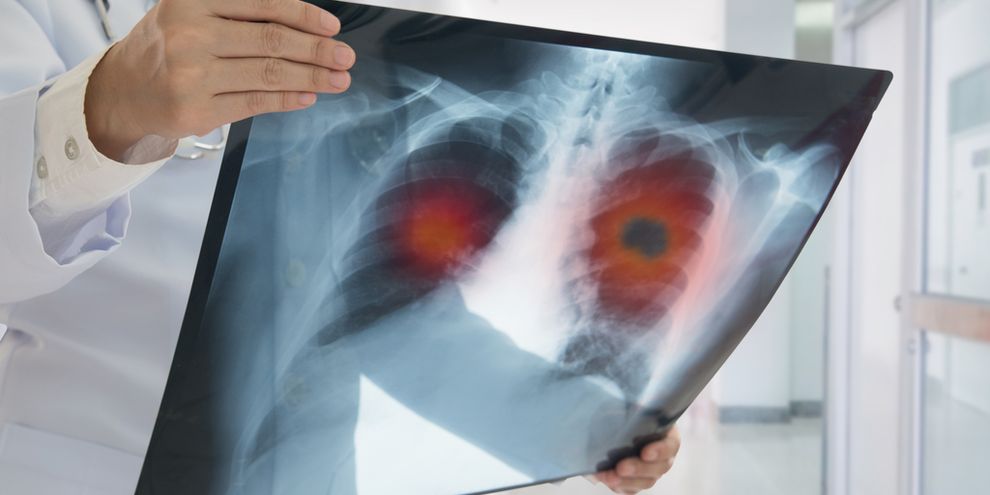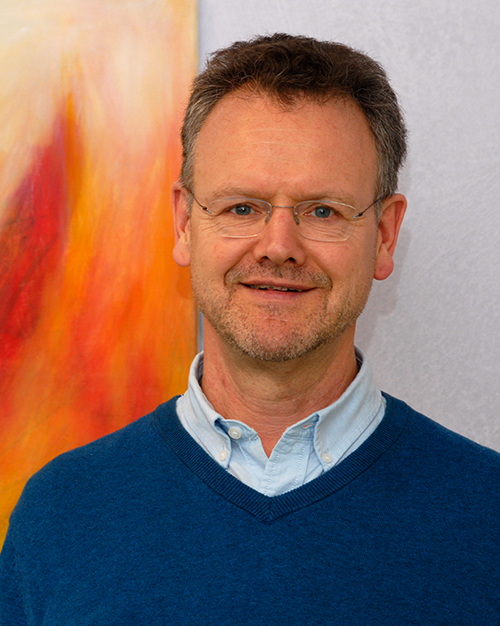
Hyperthermia in lung cancer treatment: Reinforcing the efficacy of chemotherapy and radiation
For patients, the diagnosis of lung cancer is frequently associated with another fateful assessment: Cancer in the advanced stages – inoperable. Lung cancer often takes a while to manifest, and is not detected until it has already progressed significantly. That makes it all the more important to offer patients effective treatment options for fighting back on lung cancer. Hyperthermia can help.
Hyperthermia represents an effective method to complement and reinforce the efficacy of radiation and chemotherapy in lung cancer treatment. Particularly in cases of inoperable lung cancer, hyperthermia can improve therapeutic outcomes.
This article explains the recommended treatment methods for lung cancer and discusses how hyperthermia can support the therapy, even in cases of inoperable lung cancer.
Hyperthermia in lung cancer treatment – Advisement
1. Hyperthermia in lung cancer treatment: Which types of lung cancer are there and how are they treated?
Lung cancer manifests in the form of malignant tumors in the bronchial system. Medicine distinguishes between two types of lung cancer, for which different treatment methods are proposed depending on the stage. In all stages of the disease, the therapy options depend on individual factors and a patient’s general state of health.
Small cell lung cancer:
Small cell lung cancer is a rapidly growing cancer that spreads at an early stage and forms metastases in other regions of the body, making it one of the most aggressive tumor types. Fortunately, it is also the rarer form of lung cancer, which accounts for about 15% of cases. Small tumors can only be removed surgically in individual cases if small cell lung cancer is detected at a very early stage. The most common treatment method is therefore concurrent chemotherapy and radiation, which is most effective in the early stages of the limited disease, while the tumor is still restricted to a single lung.
However, in two thirds of cases, small cell lung cancer is typically diagnosed in the later, extensive disease stage, when the cancer has already spread throughout the lung and has formed distant metastases. The chances of a cure are already significantly reduced in this stage. Nevertheless, chemotherapy can slow down the spread and improve the quality of life.
Non-small cell lung cancer:
Non-small cell lung cancer is much more common and makes up 85% of lung cancer cases. It is less aggressive than small cell lung cancer and generally easier to treat.
Patients with non-small cell lung cancer in stages I and II typically are treated with surgery and supporting chemotherapy. If the lung tumor can be completely removed, this method offers the chance of a complete cure. Exclusive radiation therapy is also an option if the cancer is still in the early stages (I and II) or if surgery has to be ruled out, e.g. for health reasons.
In the majority of cases, non-small cell lung cancer is diagnosed in the advanced stage (III), when surgery is commonly no longer possible. A combined radiation and chemotherapy treatment is suggested in those cases.
When is lung cancer inoperable?
The surgical operability of lung cancer must be reviewed for every patient, depending on the individual manifestation and progression of the disease. The patient’s state of health also plays a role.
As a rule, surgical treatment of lung cancer is no longer possible if the tumor has already spread throughout the lung and has formed metastases in the lymph nodes as well as distant metastases in additional organs or the bones. This advanced cancer growth is described as stage III and IV.
Small cell lung cancer grows so quickly that it can rarely be addressed with surgery. A surgical intervention would only be successful with very small, localized tumors (stage I), but patients frequently receive the diagnosis in stage IV (extensive disease) when the tumor has already formed distant metastases. At that point, the lung cancer is inoperable and a regimen of chemotherapy with supplementary radiation is prescribed.
Non-small cell lung cancer is also frequently diagnosed in stage III or beyond, when the cancer has already become inoperable. The standard treatment in those cases is combined radiation and chemotherapy.
2. Hyperthermia in lung cancer treatment: Hyperthermia as a supportive cancer treatment
Hyperthermia is a supplementary therapy method for lung cancer because of its ability to reinforce the efficacy of chemotherapy and/or radiation. It can improve therapeutic outcomes, particularly in cases of inoperable lung cancer.
3. Hyperthermia in lung cancer treatment: How does hyperthermia work as a complementary cancer therapy?
Hyperthermia involves heating up the entire body or specifically the patient's tissue affected by cancer. For this purpose, the body is externally irradiated with a radiofrequency that causes the tissue to heat up from the inside. Due to its chemically acidic properties, cancer tissue heats up more than healthy tissue. It reaches temperatures of 42°C to 44°C that weaken and damage the cancer cells. In contrast, the healthy tissue only reaches approx. 38°C, a completely safe temperature. The treatment typically involves about 25 sessions of 60 minutes each.
4. Hyperthermia in lung cancer treatment: What is the effect of hyperthermia on lung cancer?
The thermal damage to the cancer tissue makes cancer cells more vulnerable to chemotherapy or radiation, which in turn reinforces the efficacy of these treatments. Accordingly, hyperthermia helps to make the lung cancer cells more responsive to radiation and enhances the efficiency of the cytostatic drugs administered in chemotherapy.
As an additional effect, the heat induced by hyperthermia activates the body’s own immune system. Based on the thermal damage, the immune cells of the body can more easily recognize and attack the tumor cells as diseased tissue. Further information on the positive effects of hyperthermia in cancer treatment can be found in our article “Hyperthermia as a complementary cancer therapy - What happens during hyperthermia therapy?”
5. Hyperthermia in lung cancer treatment: Study on the treatment of inoperable lung cancer with radiation and hyperthermia
A small study in the USA has documented how hyperthermia can support radiation therapy in cases of inoperable lung cancer. Some 41 patients with inoperable non-small cell lung cancer in stages I and II were enrolled in the study. Over the course of seven years, they were either treated exclusively with radiation therapy or with a combination of radiation therapy and hyperthermia.
The final results showed that patients receiving a combined radiation and hyperthermia regimen experienced a higher survival rate. After one year, 87% of these patients were still alive, with 70% surviving after two years and 57% surviving after three years. Among patients who only received radiation therapy, the survival rate after one year was 57%, while the survival rate after two years was 36%, and 21% after three years. That means hyperthermia approximately doubled the survival rate after two or three years.
Why is combined radiation therapy and hyperthermia so effective for lung cancer? One of the study's investigators explains how the two therapies complement each other: Radiation is particularly effective in killing the cells at the edge of the tumor, while hyperthermia primarily heats up the core of the tumor. When combined, the two therapy forms therefore inflict maximum damage on the tumor.
Conclusion: Hyperthermia can support the treatment of lung cancer.
Since lung cancer is typically diagnosed at a late stage and tends to quickly form metastases, which makes surgery impossible, affected patients can particularly benefit from supplementary treatment with hyperthermia. The effects of hyperthermia support chemotherapy and radiation and enhance the therapeutic outcomes of these methods.
